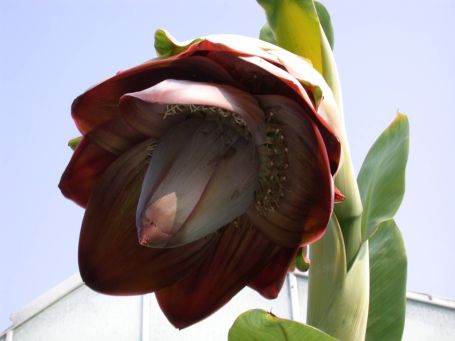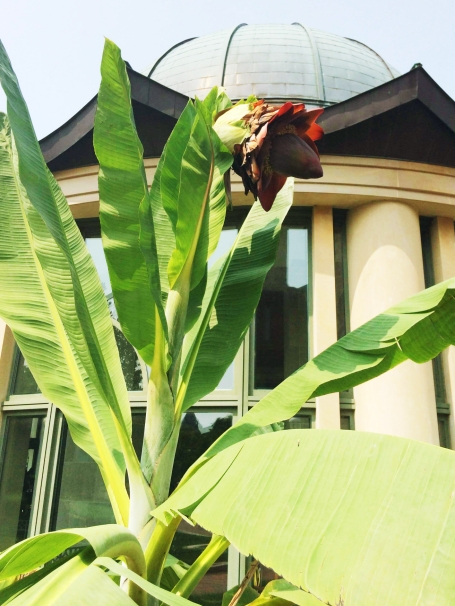Archive for August, 2014
Digging Deeper: Making Cross-Curricular Connections
We are kicking off the start of the new school year with a guest blog post by Michael Torguson, a teacher in Medford, Oregon who spent the summer teaching school at a juvenile detention facility. He used soil as a jumping off point for his students to study the science, history and geography of locations across the globe, widening their world.
Teaching is a challenge under the best of circumstances. Teaching summer school at a juvenile detention facility, the challenge gets kicked up a notch (or two!).
When I asked the kids what they wanted to learn over the summer, they said they wanted to learn botany. So we did the usual: planted an herb garden, studied water ecology and how pollution affects the land (and by extension, plants), and the properties of soil. In a regular school setting, the usual procedure would be for students to scatter around the school grounds, locate their patch of soil, mark it on a school map, and do their analysis.
But how do you teach soil and plant biology when students cannot leave the building? Answer: bring the soil from outside . . . in. I was originally going to take a weekend, drive around town, and collect soil from different areas. Then I had an idea: why not collect soil from all over the country? I reached out to various “famous places” and requested soil from their grounds for the kids to analyze. I got some very interesting responses, from “This is unprecedented!” to “You just want … dirt?”
I also got some happily unexpected responses, from “Soil from the Trinity Nuclear Test Site will always be radioactive” to the one from my new friend, Smithsonian Gardens’ own Supervisory Horticulturist Brett McNish. McNish said he did a similar project a while back and offered to send some soil that he was able to collect from overseas. So Brett sent me soil from the U. S. Embassy Grounds in Kabul, a Forward Operating Base in Iraq, sand from Omaha Beach, as well as from the garden near the National Museum of the American Indian.
In all, we received and tested soils from:
- Arecibo Observatory, Puerto Rico
- Central Park, New York
- Dodger Stadium, California
- Forks, Washington (We had a Twilight fan in class!)
- Haleakala, Hawaii
- Harvard Yard, Massachusetts
- Los Angeles Coliseum, California
- Monticello, Virginia
- Mt. Vernon, Virginia
- Old North Church, Massachusetts
- Pike’s Peak, Colorado
- The Smithsonian Institution, Washington, D.C.
- Trinity Nuclear Test Site, New Mexico
- Very Large Antenna Array, New Mexico
- White Sands Missile Testing Range, New Mexico
A Social Studies teacher by training (and excitable by nature), I decided not to limit the science project just to science; I decided to add geography and history to the mix. The project was getting really interesting!
The project evolved, and ultimately each student:
- Learned the Scientific Method and proper observation and documentation methods;
- Performed Soil Properties Classification (all students classified all soils);
- Conducted Nitrogen, Phosphorous, Potassium (NPK) and pH testing;
- Researched what each of the above tests mean in terms of soil health;
- Researched the climate and geography of the region;
- Researched the history of the location where they received the soil;
- Created and presented their report to the class.
Best of all, the students rose to the challenge! Not only did they follow correct analysis procedures, but they also wrote very good historical and scientific summaries. As a bonus, they got to keep their dirt as a souvenir. (Except for the Trinity Soil – I didn’t want to have to answer questions about why I was giving radioactive material to students!)
In the end, the students had fun, learned a few things, and got to “visit” places they otherwise would not have been able to go. I also learned an important lesson about creatively teaching across the curriculum.
Oh, and in case you are wondering, the student who analyzed the Smithsonian soil reports that:
“The soil was dark brown, with lots of small roots. It was rich and healthy. The Phosphorous level was low (0-50lb/acre), there were trace amounts of Nitrogen and Potassium, and the pH level is 7.0.”
-Michael Torguson. During school year Michael is a substitute teacher at Central Medford High School in Medford, Oregon.
August 26, 2014 at 11:22 am smithsoniangardens Leave a comment
The Labrador Duck
Of the four birds currently on display as sculptures in the Enid A. Haupt Garden, the Labrador duck is the one about which we know the least. Despite this—or perhaps because of this— the bird has spawned different theories about how it lived and how it eventually became extinct.
The sculpture is part of The Lost Bird Project, which seeks to create awareness about our fragile bird species. The creation of artist Todd McGrain, the project has been sponsored by the Smithsonian and other organizations. Four birds will remain in the Haupt Garden until spring 2015; a fifth bird is in the garden of the National Museum of Natural History, on the corner of 12th Street and Constitution Avenue.
The Labrador duck lived along the east coast of North America, from Canada to the Chesapeake. A small bird, it was a good diver and swimmer. It had a flat, square bill that allowed it to scoop up small fish and shells, on which it lived.

Labrador Duck (Camptorhynchus labradorius), USNM 61300. Image courtesy of the National Museum of Natural History.
Unlike other birds that became extinct because of specific practices or even a single cataclysmic event, the Labrador duck declined for unknown reasons. Its meat did not taste good, so the duck was not hunted widely. Nor was its plumage unique or particularly desirable. There is some speculation that the number of ducks began to decline when their main source of nourishment, a specific mollusk, was depleted by overfishing. Another possibility is that its eggs were widely hunted by predators, thereby reducing the number of birds. The story of the Labrador duck therefore underscores the interconnectedness of the natural world: change in one element can trigger further changes, eventually jeopardizing the existence of unique species.
Interestingly, the extinction of the Labrador duck has inspired both research and whimsy. Biologist Glen Chilton embarked on an 82,000-mile journey to explore the bird’s history, which he captured in his book The Curse of the Labrador Duck (2009). More recently, A Birder’s Guide to Everything (2013), a movie starring Ben Kingsley, centers on a group of teenagers’ quest to find the duck, which they do not think is extinct.
-Annette B. Ramírez de Arellano, Smithsonian Gardens volunteer
The Lost Bird Project is a companion exhibit to “Once There Were Billions: Vanished Birds of North America” on view at the Smithsonian Institution Libraries through October 2015.
Ensete superbum

Cliff banana (Ensete superbum). Image courtesy of the National Museum of Natural History.
This monocarpic, herbaceous banana is a wonderful specimen in any garden. Monocarpic describes plants that flower, set seed, and then die. Ensete superbum, or cliff banana, is native to India and has a conical pseudo-stem made up of overlapping leaf sheaths. Its bright green leaves, reaching six feet in length, drop during winter. The plant may reach ten to twelve feet while blooming. The inflorescence (or flower head) is a curved terminal spike with triangular oblong fruits and reddish brown bracts that persist for some time to add ornamental value. This banana, unlike many others, does not produce suckers and only reproduces by seed. In some extraordinary cases, plants in the wild can go into a three to four year dormancy period.
This rare plant in now on display in the Enid A. Haupt Garden. You can see it for a limited time just inside the west entrance to the garden, close to the entrance to the S. Dillon Ripley Center.
-Matt Fleming, Smithsonian Gardens horticulturist






